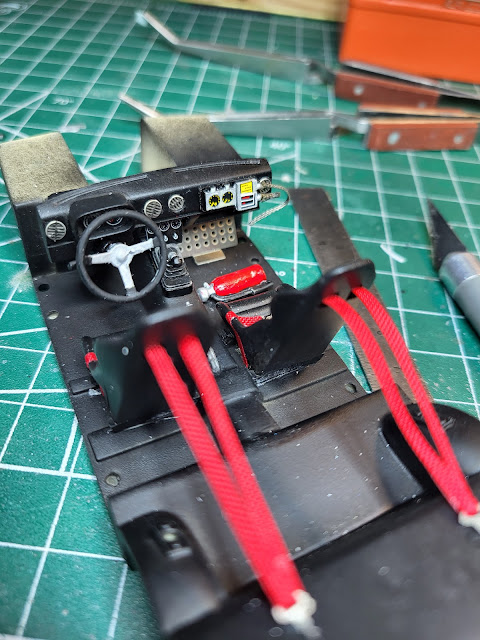Progress is being made, marred by a missing cam cover and the oil filter pinging off into hyperspace somewhere after I had carefully painted the canister green and the mounting housing aluminum. Nonetheless I am persevering.
The missing cam cover is not a surprise with these cottage-industry kits; and getting a new part for kit number K-340 (the most recent one is K-832) is highly unlikely, no matter how friendly the Japanese owners are. So the current rough mock-up made of 4 mm x 2 mm rectangular styrene rod will have to do. I've sent a note and if a real one ever turns up, I'll be able to pry it off and replace it.
As for the oil filter, it will be all but invisible once the body is on, so no great loss, except to my self esteem. Can you spot its location now? No, I didn't think so.
Missing steps include the distributors (this was another twin-plug head, with a pair of 6-cylinder distributors) and a few other items before it will be time to tackle the interior and body.
I will also have to convince someone with an airbrush to apply the correct paint. There is a model car show near here next Saturday, and I'll be bringing the bits to illustrate the issue.
Stay tuned!




































